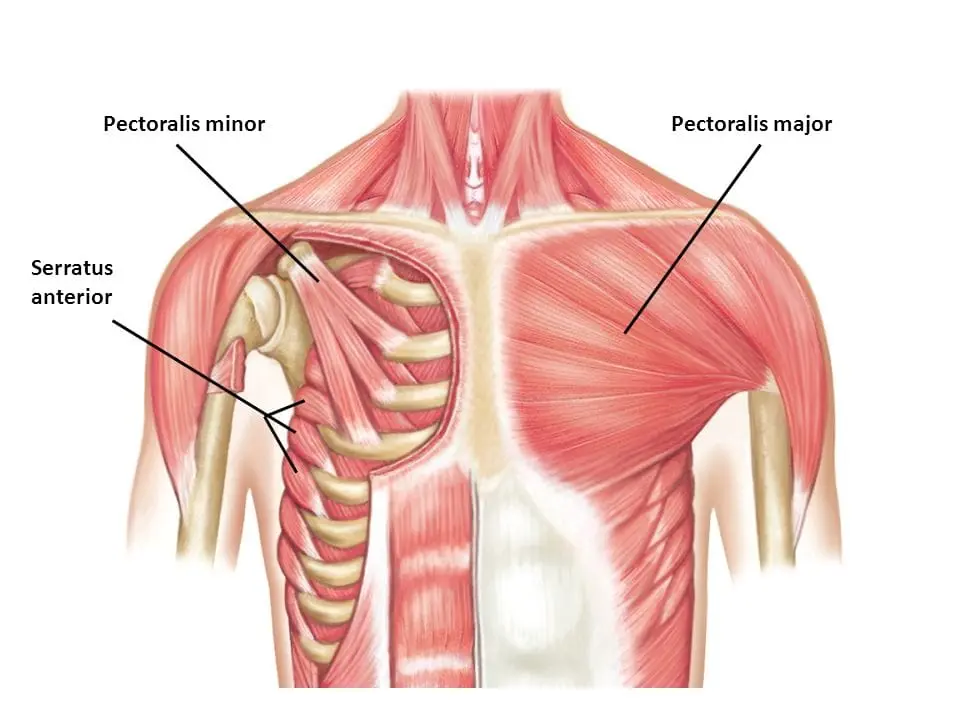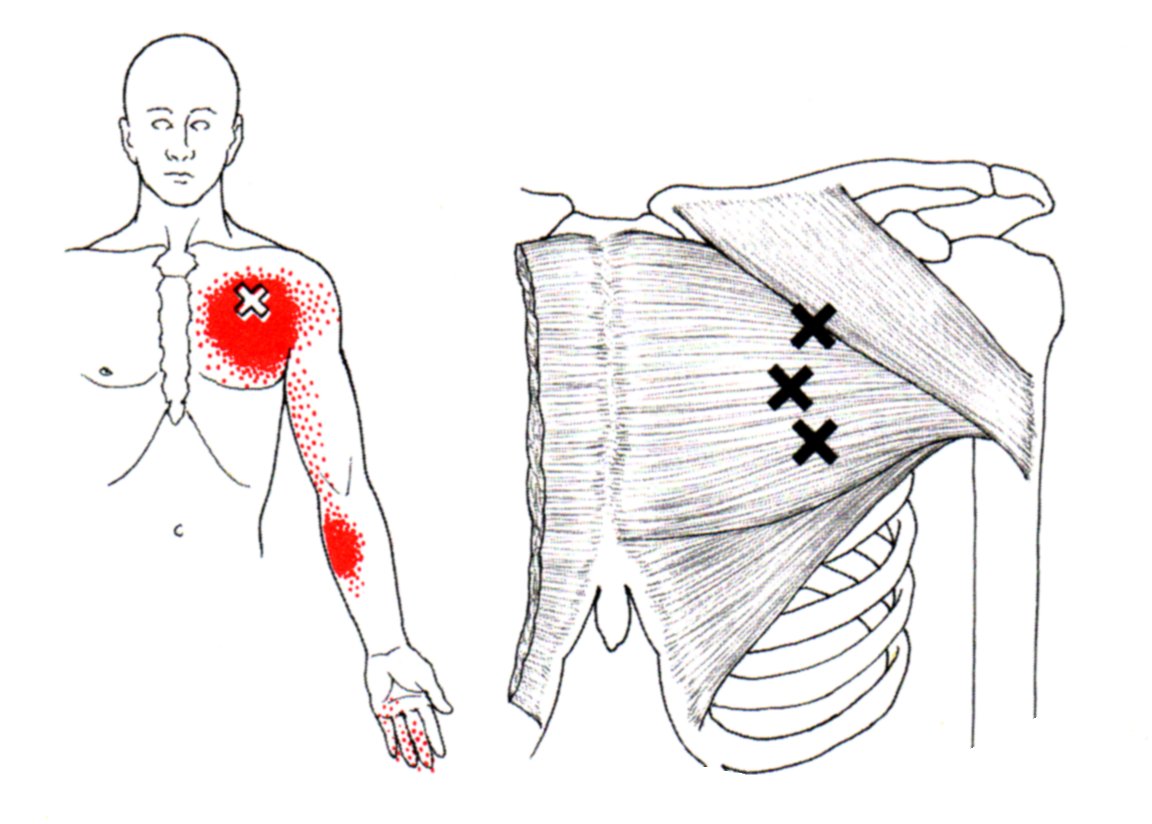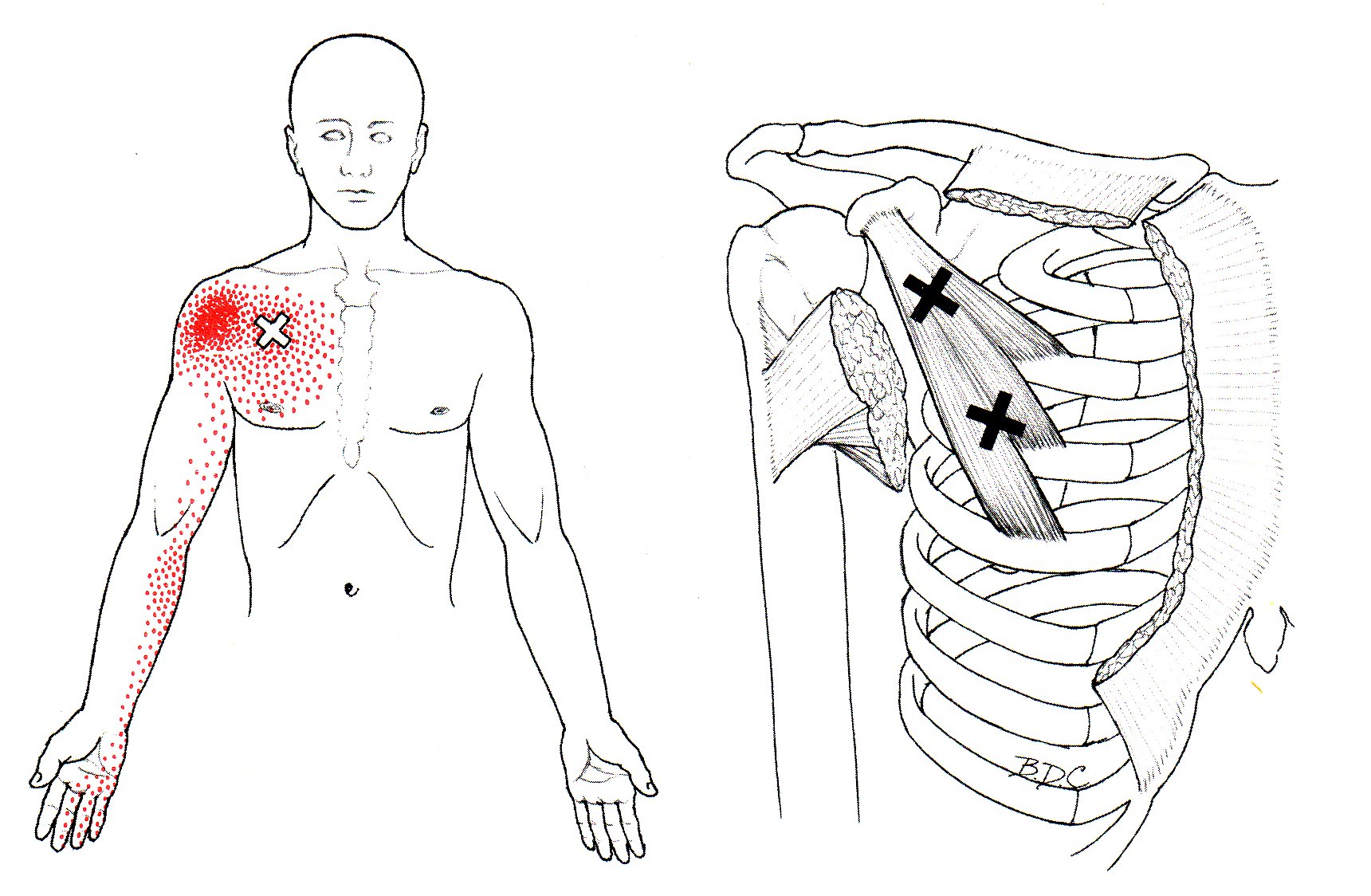These muscles are important for posture, arm stability and movement. They may be part of Upper Crossed Syndrome, poor posture, and pectoralis minor can be part of thoracic outlet syndrome.
What They Do
Pectoralis Major: helps move your upper arm out in front of you, bringing it close to your body after it away from the body, and twisting your arm inward. Pectoralis Minor: pulls your shoulder blade up and forward - needed for many movements, but can also contribute to poor posture.
Why They Hurt
- You may have a knot or spasm
- You might be overusing them and they may have shortened
- There may be joint dysfunction (restriction in spine or shoulder)
Related Problems
If you have a problem with your pectoralis muscles, you may also experience:
- Shoulder or arm pain, due to
- Trigger points - see diagram below
- A Thoracic Outlet Syndrome in which the pectoralis minor is squishing the nerves that bypass it and go into your arm
The trigger points (the ‘X’ icons) can cause pain in the colored areas.
What to Do (Treatments)
Depending on which of the above causes you may have, you can:
- Stretch (see below)
- Have your knots treated
- Have your upper back, ribs, clavicles adjusted and shoulder mobilized (as applies to you)
How to: Stretch
- Stand within a doorway. Bring your arm out to the side and bend your elbow, placing your forearm on the doorframe.
- For pectoralis major, your arm should be at a 90 degree angle, for pectoralis minor, your arm should be at a 120 degree angle.
- Move one foot forward and slowly turn your torso away from the arm against the doorframe until you feel a stretch.
- Hold for 7-15 seconds and slowly turn back to your starting position.
- Repeat as instructed by your provider.





